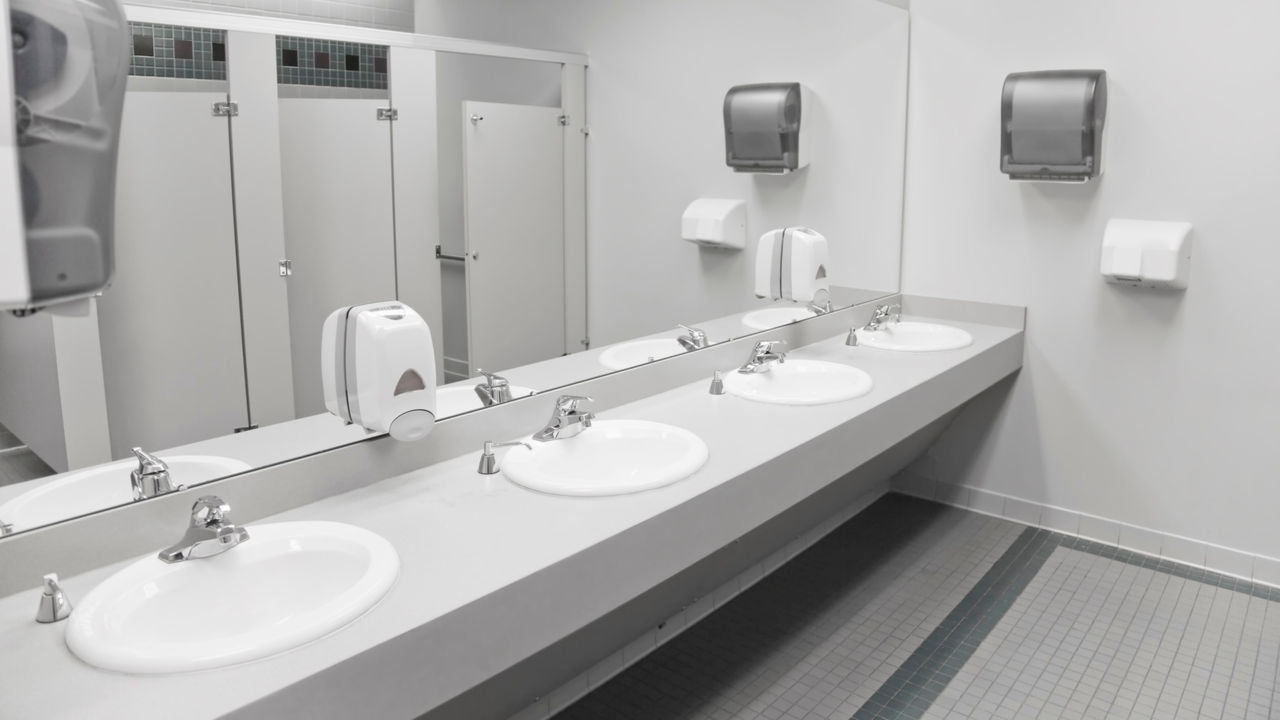I remember being a young child and being utterly fascinated by the public restroom. The bright colors, the strange sounds, the sense of adventure it held – it was a world unto itself. Of course, my perspective has evolved since then, but the simple act of visiting a restroom remains a universal experience, a constant in a world of constant change. This ubiquitous space, known by many names, holds a surprisingly rich history and, like the world around it, is constantly evolving.

Image: www.shrm.org
The modern restroom, with its porcelain fixtures and gleaming stainless steel, is a far cry from its humble beginnings. From ancient Roman latrines to Victorian water closets, the journey of the restroom is a testament to human ingenuity and a reflection of changing societal norms.
The History of the Restroom: A Journey Through Time
The concept of a dedicated space for human waste disposal is perhaps as old as civilization itself. Ancient civilizations like the Romans, Egyptians, and Greeks all had elaborate sanitation systems. The Romans, for example, built public latrines that were often connected to elaborate sewer systems. While these early structures were more functional than luxurious, they laid the groundwork for what would become the modern restroom.
From Cesspools to Flush Toilets
The evolution of the restroom was gradual, with significant leaps in technology and sanitation occurring throughout the centuries. The invention of the flush toilet in the 16th century marked a turning point. These early toilets were often cumbersome and prone to leaks, but they introduced the concept of waste removal through a system of pipes and drains, paving the way for modern plumbing systems.
The Victorian era witnessed a surge in domestic plumbing, making flush toilets increasingly common in middle-class homes. This period also saw the introduction of more elaborate designs, focusing not just on functionality but also on aesthetics and hygiene. Porcelain became the material of choice for toilets and sinks, emphasizing cleanliness and creating a more refined environment.
As the 20th century unfolded, the development of modern technology spurred further advancements in restroom design. The introduction of electric fans, automatic flushing mechanisms, and more efficient plumbing systems transformed the utilitarian restroom into a more comfortable and hygienic space. This era also witnessed the rise of “family-friendly” restrooms, catering to people of all ages and abilities.
Restroom Etiquette: Navigating a World of Societal Norms
The restroom, while primarily a functional space, also serves as a microcosm of societal norms and expectations. Etiquette in the restroom varies across cultures, but some universal principles remain. These include:
- Cleanliness: Washing your hands thoroughly after using the facilities is a fundamental rule of hygiene and good manners.
- Respect for Others: Be mindful of noise levels, avoid lingering in the restroom unnecessarily, and always strive to maintain a clean and tidy environment.
- Disability Considerations: Always prioritize accessibility for people with disabilities, leaving ample space and understanding the need for specially designed stalls and fixtures.

Image: fiji.desertcart.com
Modern Trends Transforming the Restroom
The modern restroom continues to evolve, driven by advancements in technology, changing social attitudes, and a growing awareness of sustainability. Some notable trends include:
Smart Technology Integration
Smart toilets, equipped with features like automatic flushing, temperature control, and even self-cleaning functions, are gaining popularity. Voice-operated dispensers for hand soap, paper towels, and hand dryers are also becoming commonplace.
Sustainable Practices
Many restroom designs now prioritize water conservation with low-flow toilets and water-efficient faucets. Biodegradable cleaning products and the use of recycled materials are also becoming increasingly popular.
Gender-Neutral Facilities
The concept of gender-neutral restrooms, where facilities are open to all regardless of gender identity, is becoming more prevalent, particularly in public spaces and workplaces. These designs are often marked with symbols that are inclusive and easily understandable.
Expert Advice: Creating a More Inviting Restroom
If you’re designing or renovating a restroom, consider these tips to create a more welcoming and functional space:
Prioritize Functionality and Accessibility
Ensure there’s sufficient space to move around comfortably, providing adequate clearance for wheelchairs and mobility devices. Choose fixtures and fittings that are easy to use and adapted to different needs.
Invest in Quality Materials
Durable, easy-to-clean materials like porcelain, stainless steel, and durable tiles are excellent choices for restrooms. Consider finishes that are resistant to stains and bacteria, promoting a cleaner and more hygienic environment.
Enhance the Aesthetics
Create a warm and inviting atmosphere with soft lighting, natural ventilation, and tasteful decorations. Use color schemes and accents that are calming and uplifting, turning the restroom from a mere functional space into a more comfortable haven.
Restroom Frequently Asked Questions:
Q: What’s the difference between a restroom and a washroom?
The terms “restroom” and “washroom” are often used interchangeably. However, “restroom” is generally considered more formal and typically refers to a space with toilets, urinals, and sinks. “Washroom” may encompass a wider space with showers or other bathing facilities.
Q: Is it acceptable to use the restroom for purposes other than washing hands or using the toilet?
Restrooms are primarily designed for hygiene and waste disposal. Using them for extended periods, working, or other non-related activities can be considered inappropriate.
Q: What should I do if I encounter a dirty or malfunctioning restroom?
If you encounter a dirty or malfunctioning restroom, report it to the management immediately. It’s crucial to ensure that restrooms remain clean and functional for the health and safety of everyone.
Restroom Or Washroom
Conclusion:
The restroom, a simple space often overlooked, is a reflection of our history, culture, and technological advancements. As we move forward, we can expect to see further innovations in restroom design, with a growing focus on sustainability, accessibility, and comfort. Remember, the restroom is not just a functional space, but an essential part of our shared human experience.
Would you be interested in learning more about the history of the toilet?






